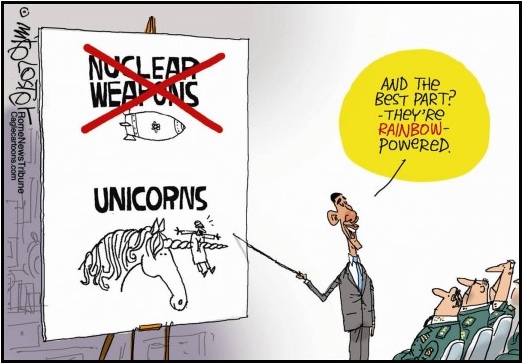by Peter Huessy
 Cutting $70 billion over the next ten years from America’s nuclear deterrent is the goal of a number of proponents of global zero. The cut would be equal to roughly 25% of all planned nuclear deterrent expenditures. The idea is to delay building a new dual capable strategic bomber while also cutting the number of nuclear submarines to replace the current Ohio class boomers. In both cases, the arms control enthusiasts pushing such policies are missing the boat–their budget numbers do not add up and their strategic thinking is off base.
Cutting $70 billion over the next ten years from America’s nuclear deterrent is the goal of a number of proponents of global zero. The cut would be equal to roughly 25% of all planned nuclear deterrent expenditures. The idea is to delay building a new dual capable strategic bomber while also cutting the number of nuclear submarines to replace the current Ohio class boomers. In both cases, the arms control enthusiasts pushing such policies are missing the boat–their budget numbers do not add up and their strategic thinking is off base.
The current and planned fleet of 12 submarines will be based in Kings Bay, Georgia and Bangor, Washington. These awesome deterrents allow at any one time four submarines to be deployed in the Atlantic and Pacific Oceans, quietly and secretly, patrolling an area from which they can deter any nuclear attack against the United States or its allies as well as deter a conventional conflict from escalating to the potential use of nuclear weapons.
Each new submarine will have 16 Trident D-5 missiles compared to the historical 24 which each submarine had during the Cold War. This accommodates the restrictions in the New Start treaty which limits the missiles and bombers the US can deployed to no more than 700, compared to 1100 at the end of the last century and a decade away from the end of the Cold War.
With defense acquisition, the research, development, test and evaluation (RDT&E) costs for a fleet of submarines is no different whether the ultimate number bought is 4, 8, or 12. So cutting the production of submarines by four—from 12 to 8—doesn’t save any of this money.
But will not we save fully a third of the costs of buying 12 submarines in the first decade if we only buy 8?
No, we will not save any funding until the end of production when we stop at eight and not go forward for a buy of another four submarines. And because we are only buying 8 rather than 12 subs, the unit price will be higher for each boat. The end of production at 8 submarines will be 2035. You would then save funding.
But the key is that production has to stop for defense dollars to be saved. As an alternative some have proposed that we delay production of the new submarine by four years and thus save money up front at the end of the next decade. But we would be putting at risk both the industrial base and national shipyards by so doing.
This would also foolishly reduce the number of available submarines to no more than six at various extended times over the next few decades as the idea being put forward by some nuclear zero enthusiasts is to also retire 4 Trident submarines early to save money before replacement subs are even available. The result would be a seriously lacking deterrent some 50-75% less effective than the current submarine fleet.
The upshot of letting budget shenanigans determine deterrent capability is a greater risk that an adversary of the US will engage in reckless behavior to achieve tyranny’s objectives under the assumption the US is too weak to deter. Think Syria, Ukraine, Iraq and the South China Sea today and even worse aggression into the future.
It is also true these conflicts involve nations or nations allied with the central actors with nuclear weapons even though some nations involved are non-nuclear. But our adversaries may very well see the relative balance among the nuclear superpowers in these conflicts and conclude the balance favors them–the bad guys, the rogues, the new tyrannies. The Soviets referred to this shift in the 1970’s as the “correlation of power”. And if they perceive the balance of power favors action now, we may see more recklessness and aggression.
Nuclear coercion is not simply the domain of nations eye-ball to eye-ball during the Cold War. It is the tactic now being pursued by the masters of tyranny and totalitarianism of which the most notable practitioner today is Mr. Vladimir Putin, the President of Russia. Welcome to the new nuclear age of nuclear coercion.
. . . . . . . . . . . . . . . .
Peter Huessy is the President of Geostrategic Analysis located in Potomac, Maryland outside of Washington, D.C.